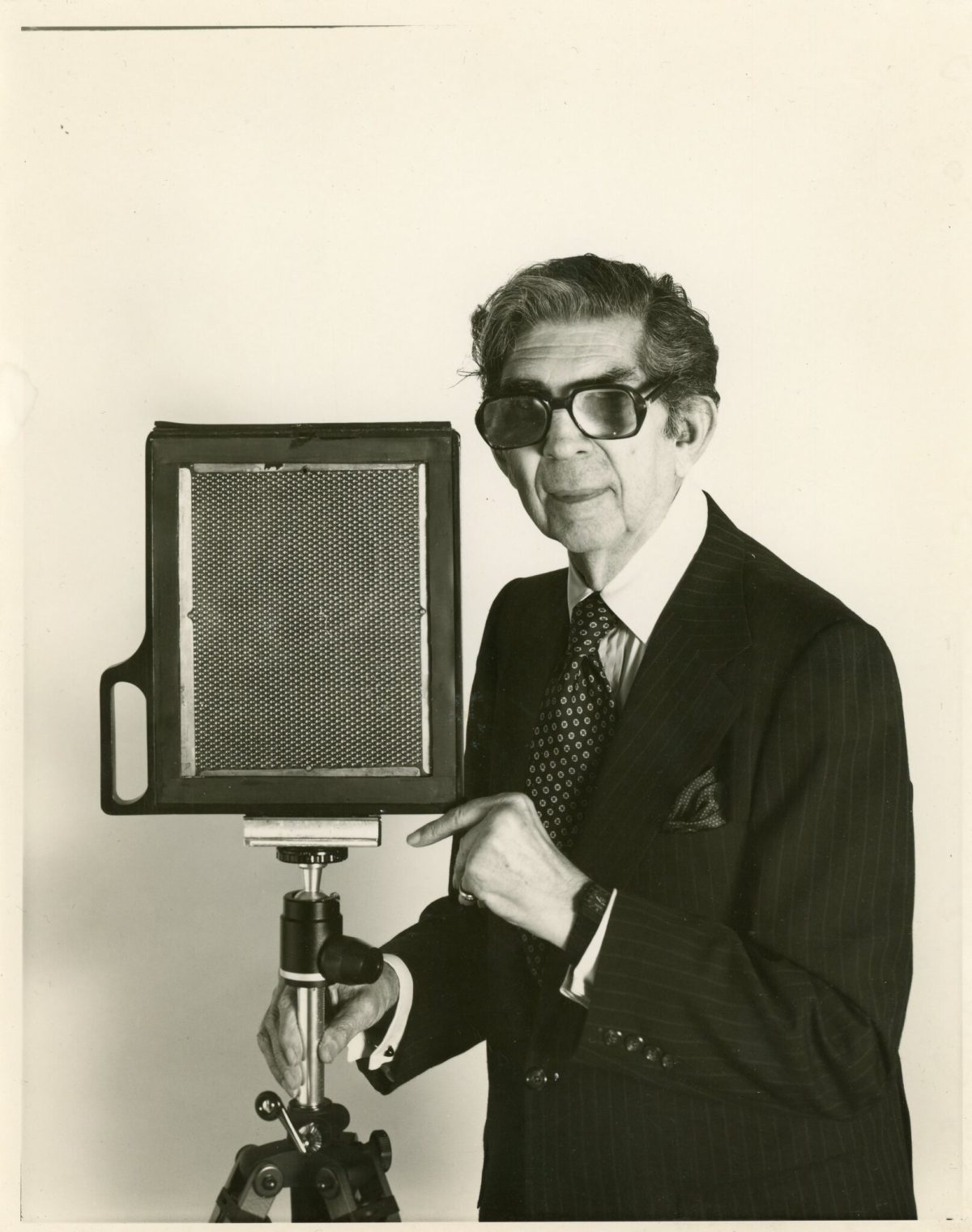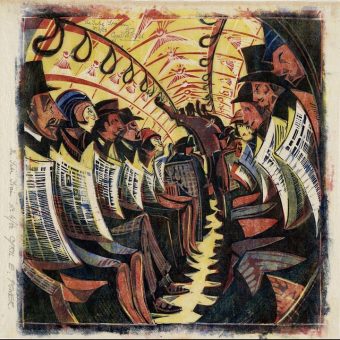“Imagine… a photograph of a woman wearing earrings adorned with a glittering De Beers diamond. You see one earring. Walk slowly past the photograph so you are viewing it from gradually changing angles… The earring from one ear recedes from view while its twin [appears] in turn on the other ear.”
– Marquis André Roger Lannes de Montebello
Marquis André Roger Lannes de Montebello (1908–86) was on a mission to create three-dimensional photography.
Born into a well-connected French aristocratic family, he worked as an artist, commercial illustrator, art critic and portrait painter. His wife, Germaine Wiener de Croisset, was a descendant of the Marquis de Sade and half-sister to Marie-Laure de Noailles (31 October 1902 – 29 January 1970), patron of the Surrealists who financed many of American artist Man Ray’s (August 27, 1890 – November 18, 1976) experimental films.
In 1947, de Montebello moved to the United States to pursue his interests in optical research. There he worked on the development of a number of his inventions, including, as MIT notes: VIDEX process, a pseudo three-dimensional photographic system; IDEALITE, an ultra-thin transparency illuminator; a 3-D x-ray technique; SYNTHALYZER, a technique and instrumentation for the dissection of scientific specimens and their 360 degree optical reconstruction; INTEGRAM, an integral autostereoscopic process; and STEREOPICTOSCOPE, developed for the artist Salvador Dali.
To achieve his aim of 3D photos – some of which we feature below – de Montebello developed a camera that produced individual transparencies, each consisting of 2,644 separate exposures. When seen through his “lens-viewing screen”, the exposures form single 3-D image that changes depending on the viewer’s position.
He named his technique ‘Space Photography’, then ‘Integral Photography’ and later ‘Fly’s Eye Photography’. Though the process never caught on, it has left us with a collection of curious images.
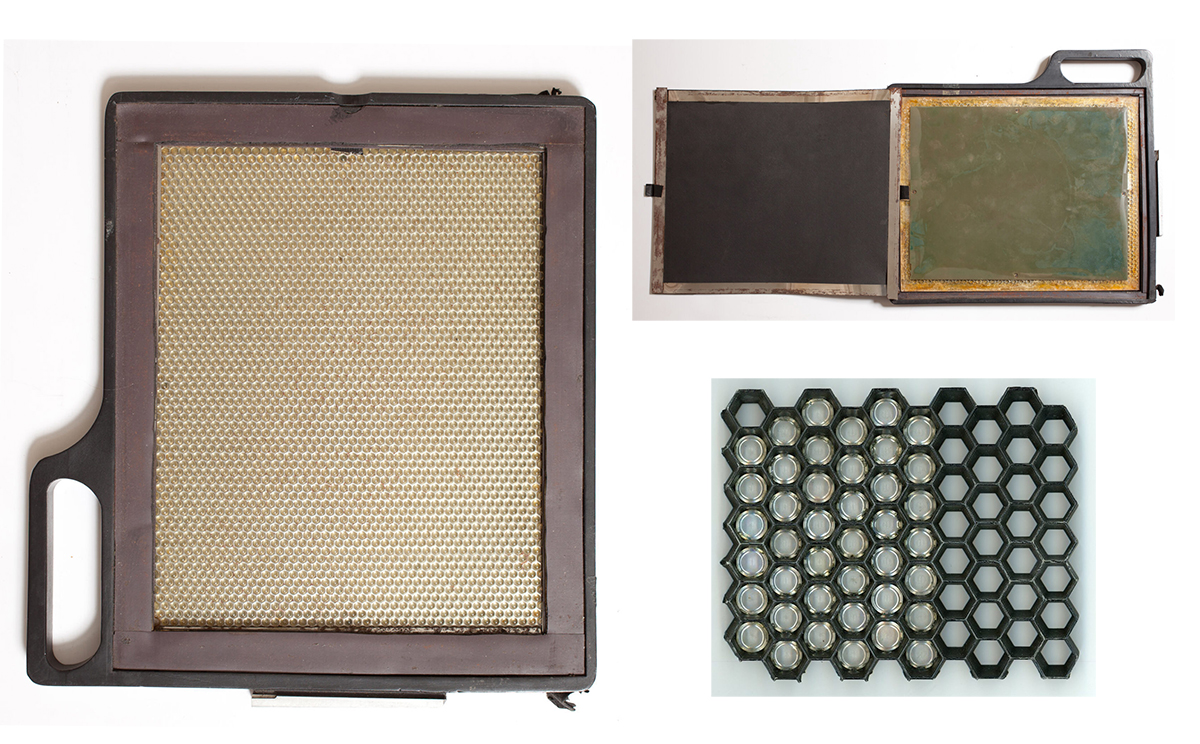
Above: Roger Lannes de Montebello (inventor), CrystalChrome 3D Camera, 1984. The camera has 2,644 lenses, each of which records a small part of the subject from slightly different angles. When taking a picture the camera is placed a mere ¾ of an inch from the subject.
Below: The Integram 3D Photographs are each composed of a photo transparency seen through a viewing screen and lit from behind.







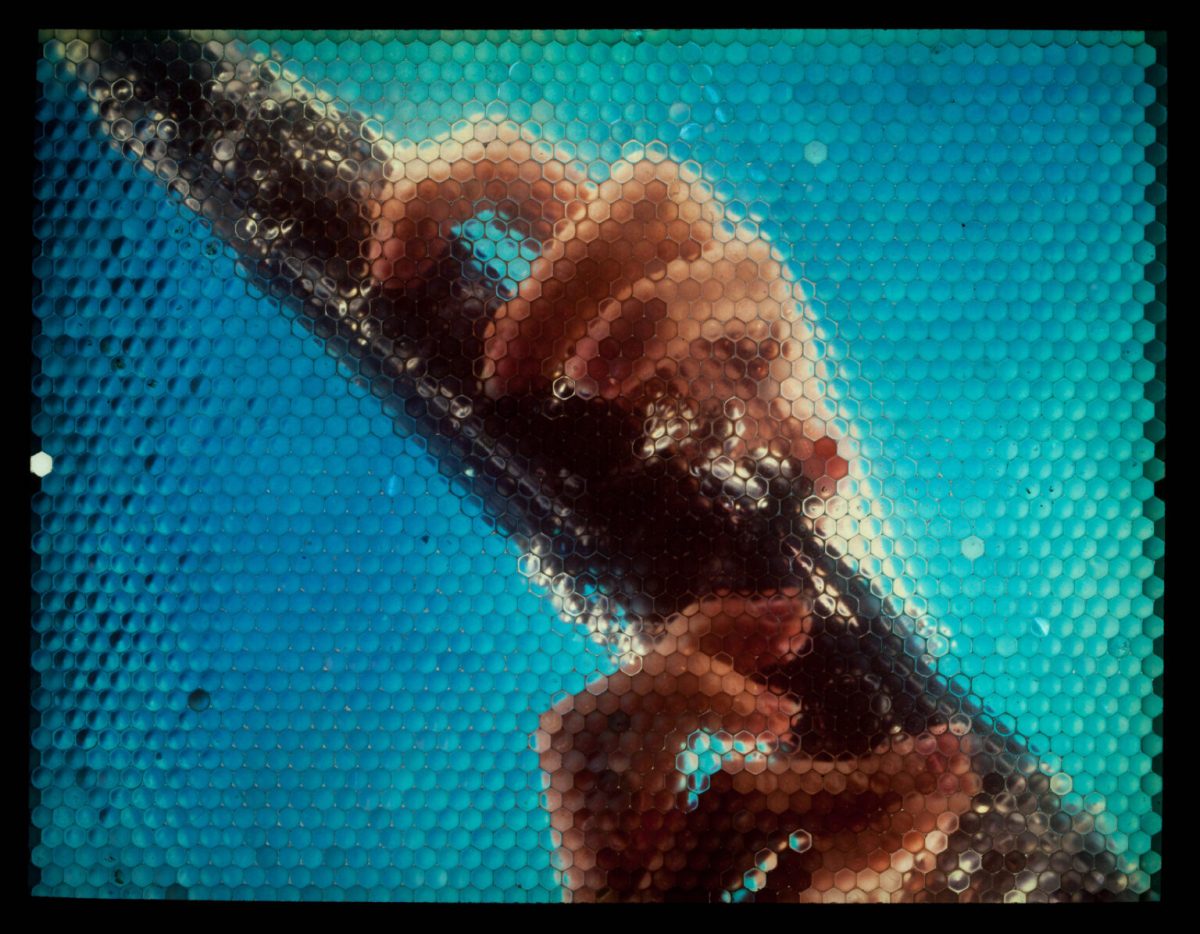
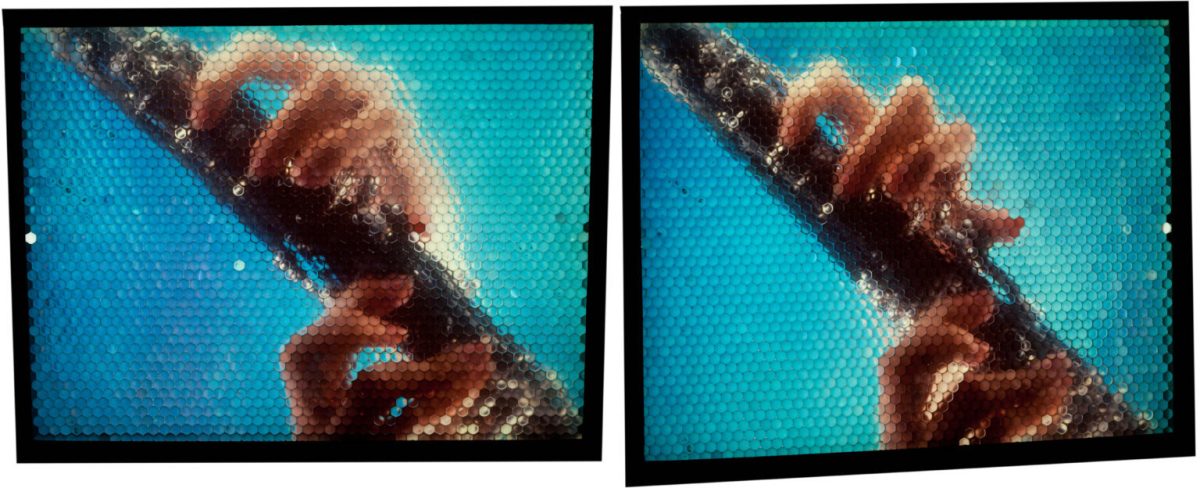





Marketing the CrystalChrome Camera. Logo designs (1983:84) by Roger Lannes de Montebello and publicity material produced for the New York Coliseum Photo Show (October 1985)
All images via Gallery 98’s collection of Roger de Montebello materials, which includes de Montebello’s “Crystal Chrome” camera, his notebooks, documentary photographs, more terrific ephemera.
This material was acquired from M. Henry Jones who worked with de Montebello at the Globus Brother’s studio from the mid-1980s right up to his death, and continues today to improve the Integram process by using new computer capabilities and fabrication techniques. Jones’ recent Integram 3-D photographs are notable for their larger size and seamless 3-D effect. M. Henry Jones’ relationship with de Montebello is just one aspect of his broader interest in art and technology. Visitors to Gallery 98 may remember an exhibition of Henry Jones’ earlier photo cut-outs.
Would you like to support Flashbak?
Please consider making a donation to our site. We don't want to rely on ads to bring you the best of visual culture. You can also support us by signing up to our Mailing List. And you can also follow us on Facebook, Instagram and Twitter. For great art and culture delivered to your door, visit our shop.
